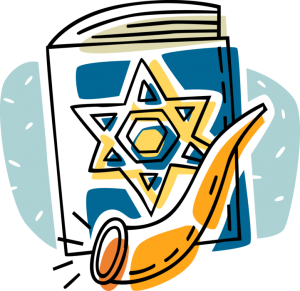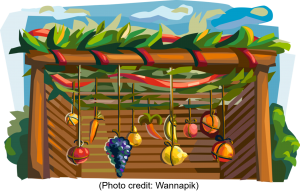Tishrei is a month with more chaggim than any other. At first look, these festivals seem eclectic and unconnected. It begins with Rosh Hashanah on the 1st of the month where we celebrate the beginning of a new year, while at the same time Rosh Hashanah is known as Yom HaDin (the Day of Judgement), where we stand before God in judgement for our past deeds, and our future fate is decided. Then follows the Ten Days of Repentance, culminating with Yom Kippur, the Day of Atonement, spent in prayer and fasting, to ensure we are sealed in the Book of Life for the next year. A mere five days after this, we change pace completely, and celebrate the joyous festival of Sukkot, by living for 7 days in a flimsy booth outdoors.
What themes link these important days together in the Jewish calendar and what is their message to us? A clue can be found in the enigmatic book of Kohelet (Ecclesiastes) read on Sukkot, and the message is more relevant this year than ever before.
The tone for the book is set in the second verse. “‘Hevel of hevels’ says Kohelet; Hevel of hevels, all is hevel'”. Hevel is a difficult word to translate. Suggested translations include futility; pointless; meaningless; emptiness; vapor; smoke; absurd; vanity. These approaches to understanding this word, which features 38 times in the book (more than the rest of Tanach put together), take their lead from one of the dominant themes of the book – the tired cynicism of an old man, who realizes he has spent his life chasing unimportant things such as wealth and power. Tradition tells us the author is King Solomon, and that he wrote the book towards the end of his life.

However, according to Rabbi Jonathan Sacks the primary meaning of this word is breath, and the primary theme of the book is the fleeting and fragile nature of life. “One generation goes, another comes, But the earth remains the same forever.” (1:4) “There is a time for being born and a time for dying.” (3:2) “And a man cannot even know his time. As fishes are enmeshed in a fatal net, and as birds are trapped in a snare, so men are caught at the time of calamity, when it comes upon them without warning.” (9:12) This is one possible connection to sukkot, where we experience the insecurity of life by living in a temporary dwelling, reflecting on our own human bodies as temporary dwellings for our souls.
This powerful theme is also found in the liturgy of the Days of Awe. The Unetaneh Tokef prayer said on both Rosh Hashanah and Yom Kippur describes humanity passing before God like sheep before a shepherd while He decides our fate. “On Rosh Hashanah it is written and on Yom Kippur it is sealed: how many will pass away and how many will be born; who will live and who will die; who in his due time and who before.” Further on in the same prayer we find the following haunting words: “Man is founded in dust and ends in dust. He lays down his soul to bring home bread. He is like a broken shard, like grass dried up, like a faded flower, like a fleeting shadow, like a passing cloud, like a breath of wind, like whirling dust, like a dream that slips away.”
There is another connection between Kohelet and Sukkot, the festival of joy, and that is Kohelet’s antidote to the inevitable angst and emptiness from the sense of life’s fleeting nature – finding joy in the present. David Brooks in his new book “The Second Mountain” distinguishes between happiness and joy.
Happiness comes from life achievements such as wealth and influence, and thus is experienced as an individual only, and is momentary because it is contingent on these lasting or being repeated. But joy he says is spiritual, comes from moral satisfaction, lives in the moment, and is shared with others in a community.
Kohelet’s Hevel-breath echoes the art of mindfulness – focusing on the joy, gratitude and meaning of the moment, despite all its insecurities and unknown futures. This year it is easy to experience a deep sense of insecurity and all too much awareness of the fragility of human existence. The message of Sukkot and the Book of Kohelet is the importance of sitting in the discomfort of this knowledge, and still find meaning and joy.
Resources
This year, the way we celebrate the festivals of the month of Tishrei will be different from other years. While this may limit how we can connect to community or our wider families in person, we hope these resources may help you to find new and creative ways to relate to and engage with the chaggim.
Charles and Lynn Schusterman Family Foundation – Rosh Hashanah Haggadah in English, Hebrew, Russian and Spanish.
National Library of Israel – Rosh Hashanah Resource Pack, Yom Kippur Resource Pack and Sukkot Resource Pack.
Moishe House – Rosh Hashanah 2020, Yom Kippur 2020, Sukkot 2020, Shemini Atzeret 2020 and Simchat Torah 2020.
LEAD – Rosh Hashanah resource for holding a conversation among your colleagues, to process the last few months.
The Akedah Project – explores the story of the Binding of Isaac, bringing new questions, ideas, and perspectives.
PJ Library – High Holidays at Home Family Guide
